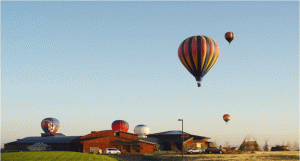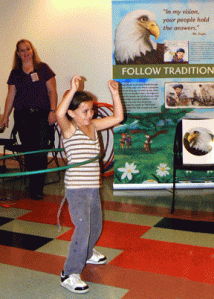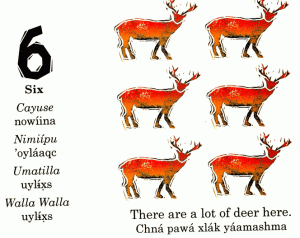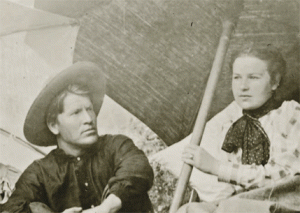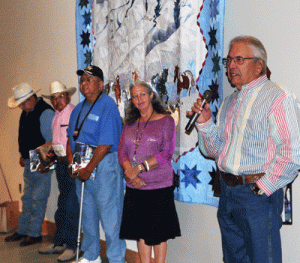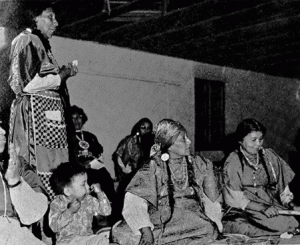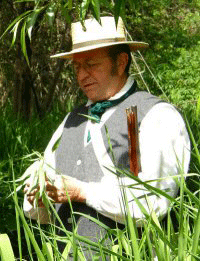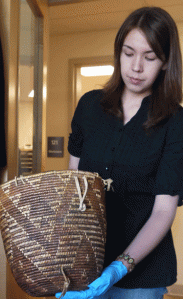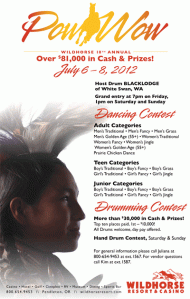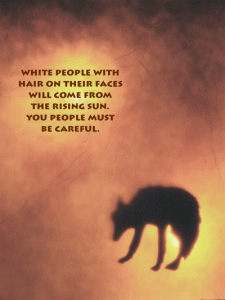‘Payshnam chaw shi’ix anaknuwita tichamna kunam tichamnim chaw inaknuwita shi’ix.’ ‘If you do not take good care of the land, then the land will not take good care of you’ –saying of the Elders, quoted by Jess Nowland
A UN scientist recently forecast that by the year 2050 there may be no more edible fish in the oceans. Also under threat from climate change are future sources of chocolate, coffee, and wine. What about my carbon footprint? Is it Bigfoot or is it a fox? Are we a big blot on the land sucking up resources and spewing out waste, or have we made the utmost efficiency out of the resources granted us?
These were concerns to the facility staff of Tamástslikt back in 2003. Most commercial energy users in the region draw an average of more than 60 percent of total power from the Boardman coal-fired plant. Compare it with the 8.35% average draw on hydroelectric power. Today in 2013, the Tamástslikt facility staff have made solid progress toward their goal of counting 73 tons of carbon savings. From 2003 to 2013, they successfully reduced electrical usage by 55% and natural gas usage by 75%. Their dream is a net-zero balance between energy demands and energy costs.
Conservation came first. Next will come renewables.
Strategies of energy conservation and optimization are value-based with Mike Cooper, Tamástslikt Facility Engineer, and Jess Nowland, Assistant Facility Manager. Reducing Tamástslikt’s carbon footprint fulfills their values, that Tamástslikt not be a resource hog. Their holistic view is of systems. At the same time, they favor modules. They decentralized the facility’s original big overkill boilers, and configured a system of smaller units that respond to the differential needs of each section of the facility and handle air variably.
They started with energy conservation. They sealed up the drafty soffit vents. They installed micro data loggers that monitored energy usage night and day. They sought out state-of-the-art light bulbs and installed motion-activated fixtures. They addressed airflow and insulation problems. The beautiful redwood siding was a particular problem that called for the engineering of back-ventilated cladding in order to wick off moisture and eliminate mold, a huge project still underway.
“People, planet and profit” succinctly describes the triple bottom lines and the goal of sustainability. The phrase, “people, planet, profit”, was coined by John Elkington in 1995 and has become a full cost accounting standard for measuring organizational (and societal) success. Tamástslikt should produce not only a return on the Tribes’ investment, but achieve a sustainable environmental impact, and effect a livable happiness quotient. Nowadays being a facility engineer takes a different mindset, like a Phil Jackson zen, attuned to technology but with concern for every little thing and the big picture. It’s all about energy.
Now that the conservation steps have achieved better efficiency, the guys look forward to building in renewable forms of energy. ‘Small wind’ power is a prospect. Ted Rapasky of the Tribes’ Department of Science and Engineering (DOSE) set up an anemometer in the field next to Tamástslikt some time ago that measured average wind speed of five meters per second.
Capacity-building and technology transfer are also part of the plan. Tamástslikt has offered a series of certifiable training for other tribal plant personnel in order to spread the benefits of being knowledgeable about energy.
What is sustainability? –Meeting the needs of the present generation without compromising the ability of future generations to meet their own needs.– United Nations Bruntland Commission

